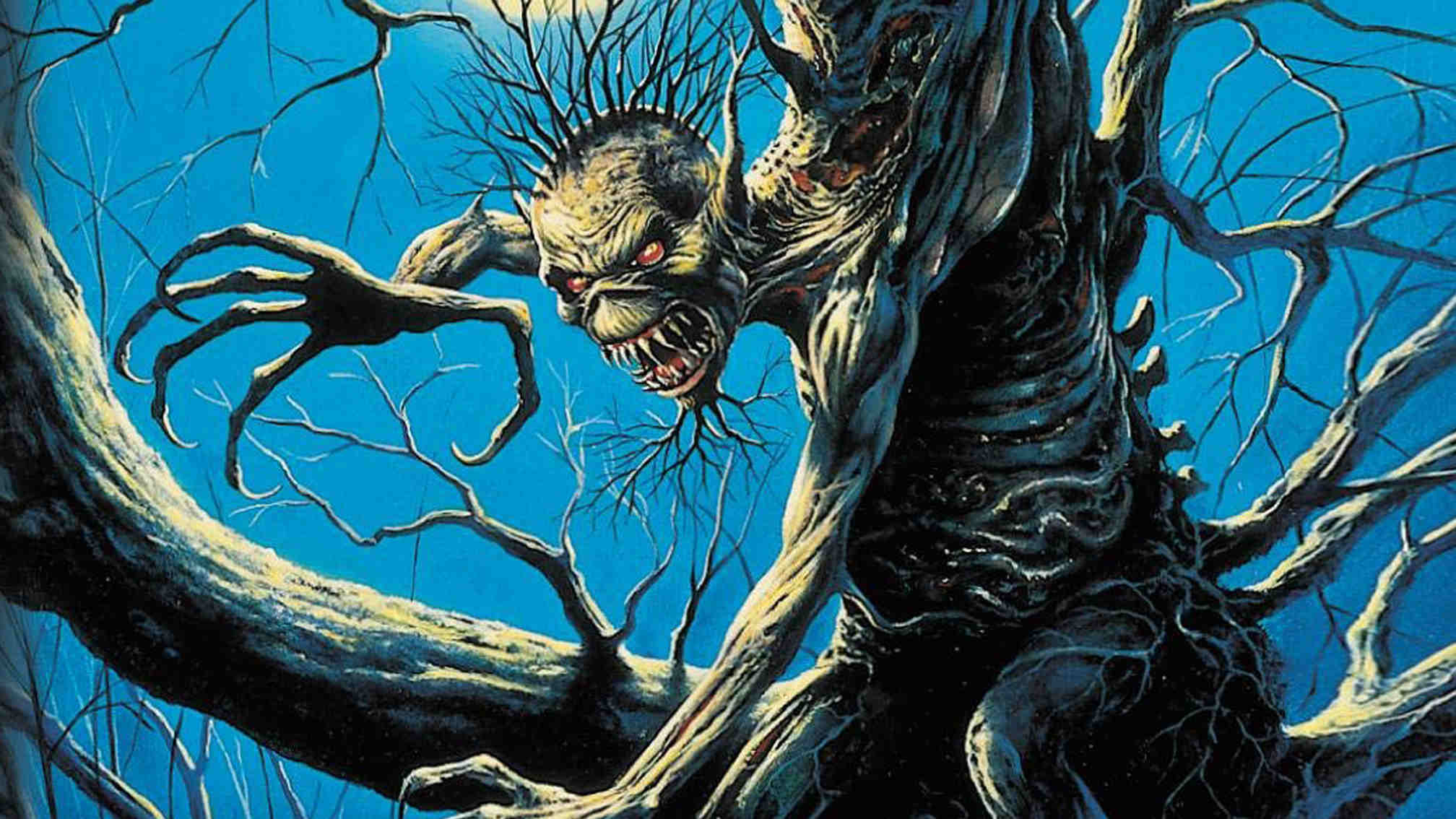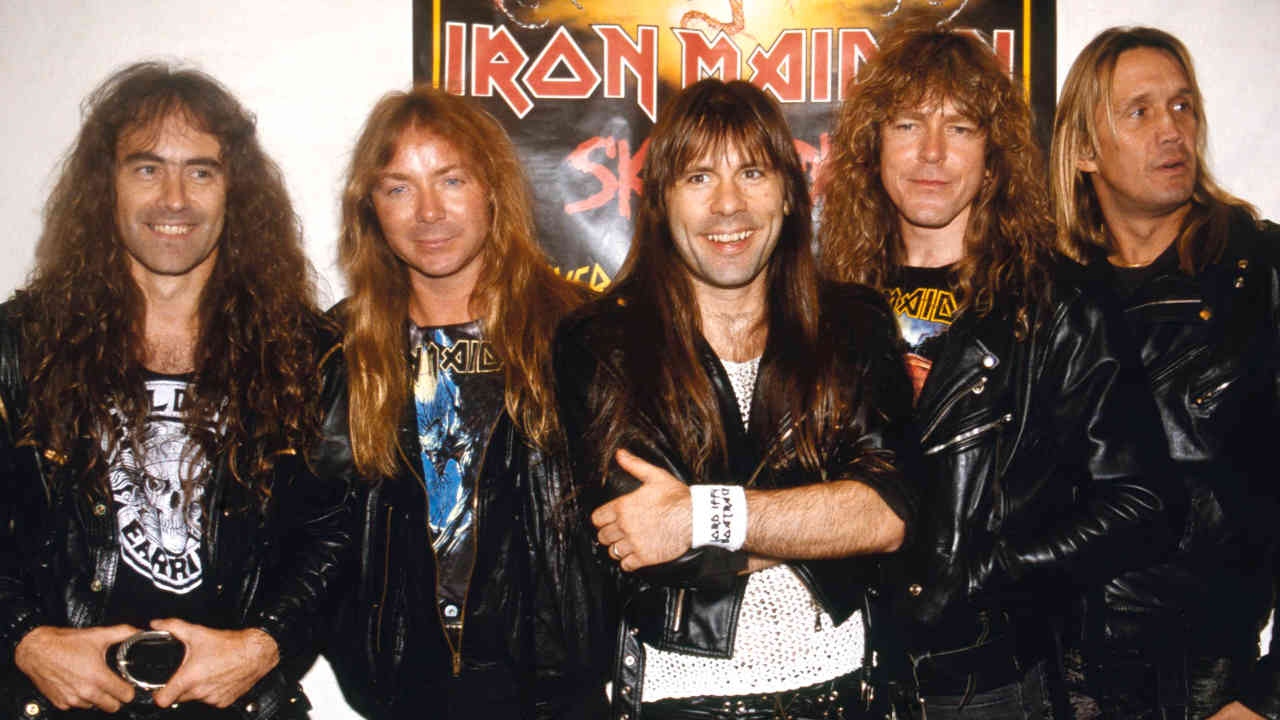How Iron Maiden’s Fear Of The Dark marked the end of an era
Iron Maiden’s Fear Of The Dark album dragged them into the 1990s – but it would mark the departure of frontman Bruce Dickinson

For all its flaws, Iron Maiden’s 1990 underpowered No Prayer For The Dying album did succeed on one level: it successfully repositioned Maiden for the incoming decade. The back-to-basics sound pre-dated the rise of grunge, itself a reaction to the excess of the 1980s (ironically, the man spearheading that movement, Kurt Cobain, had once scribbled Iron Maiden logos in his schoolbooks when he was younger).
But the grunge explosion was a few months off, and Iron Maiden had plenty to think about anyway. Chief among these was correcting the course they had embarked on with No Prayer. This may partly explain why bassist/Maiden commander-in-chief Steve Harris chose to step up as co-producer alongside longtime associate Martin Birch for their next album.
Returning to Harris’ barn-come-studio – where they had laid down No Prayer For The Dying – they recorded their ninth album, Fear Of The Dark, at a slower pace than its predecessor. The results were more polished, even if the likes of opening one-two Be Quick Or Be Dead (partly inspired by disgraced media tycoon Robert Maxwell) and From Here To Eternity still crackled with the energy that Harris had strived to recapture last time around. But they brought back a couple of longer songs too, notably the seven-minute title track which would rapidly become a live favourite.
However the biggest change came with the cover. Manager Rod Smallwood sensed that Maiden’s visuals needed updating for the new decade, and decided that some new blood was required. “We wanted to upgrade Eddie for the 90s,” Smallwood explained. “We wanted to take him from the sort of comic-book horror creature and turn him into something a bit more straightforward so that he became even more threatening.”
Fear Of The Dark would be the first Iron Maiden album not to feature artwork by Derek Riggs, the man who had created Maiden’s mascot all those years ago. Instead, the image of a vampiric Eddie crouching on a tree was illustrated by fantasy artist Melvyn Grant.
Maiden’s fans weren’t unsettled by this change if chart positions were anything to go by. Fear Of The Dark restored Maiden to No.1 in the UK and reached No.12 in the US – the same as 1988’s Seventh Son Of A Seventh Son.

Maiden kicked off the Fear Of The Dark tour on June 3, 1992 with a secret show under the name The Nodding Donkeys at the tiny Oval Rock House in Norwich. On 22 August, they returned to the Monsters Of Rock festival at Castle Donington in Leicestershire. Where their previous appearance had been marred by the tragic deaths of two fans earlier in the day, this time they served up a vintage Maiden performance for the ages, even inviting former guitarist Adrian Smith, who had left before No Prayer For The Dying, onstage to play Running Free.
Sign up below to get the latest from Metal Hammer, plus exclusive special offers, direct to your inbox!
Behind the scenes, though, trouble was brewing. After the tour finished, Bruce Dickinson travelled to Los Angeles to begin working on a second solo album. Rod Smallwood visited the singer in the studio. That’s when Dickinson dropped a bombshell: he wanted to leave Iron Maiden.
“It was all about stepping out of what was a pretty comfortable regime,” he later explained. “Hard work, good guys, relatively safe, well-managed. All the things people would say, ‘He, that’s a comfortable job.’ That was my life in Iron Maiden. I thought, ‘It’s not enough. I’m too young to be settling down.’”
Dickinson’s announcement threw Harris for a loop. For the first time in his professional career, the bassist was unsure of the future of Iron Maiden. He called Dave Murray and told his old friend that he didn’t know whether the band would continue.
“I did have a doubt as to whether to carry on or not,” recalled Harris. “I thought, ‘I just don’t have the strength at the moment.’”
Murray himself had no such qualms. “We were all sitting around talking,” said the guitarist. “It was probably the first real long, serious talk the four of us had had together in ages. I suddenly just got fed up talking about it and went, ‘Look, why the fuck should we give up just cos he is? Bollocks to him. Why should he stop us playing?’ I hadn’t really thought about it. It just came out.” Murray’s impromptu pep-talk worked. Harris had the impetus he needed to continue the band.
Maiden had another tour lined up through the spring and early summer of 1993. Ever the professional, Steve Harris refused to cancel it and the band took the bold step of announcing Dickinson’s departure at a press conference just before the tour began, assuming it would work as a chance for the fans to say goodbye to the singer. It quickly became apparent that the reality was very different. The atmosphere at the shows was awkward at best.
“It wasn’t a good vibe," Dickinson later admitted. “We walked out onstage, and it was like a morgue. The Maiden fans knew I’d quit, they knew these were the last gigs and I suddenly realised that, as the frontman, you're in an almost impossible situation.”
Worse, backstage tensions between Dickinson and his soon-to-be-ex-bandmates had hit rock bottom. This was partly down to Harris’s view that the singer wasn’t giving it his all.
“We all though thought he was really out of order and that he wasn’t performing,” said the bassist. “The worst thing was, if he’d been fucking crap, over the whole tour, you can sort of understand it, but this was specific times. It was so calculated. I really wanted to kill him.” The singer refuted the claims, but the bad blood would linger after he had left the band
Bruce Dickinson played the last show of his original run with Iron Maiden on August 28, 1993 at Pinewood Studios just outside of London. The show was filmed as an MTV special and it featured magician Simon Drake, who concluded the show, appropriately enough, by ‘killing’ Dickinson. It pretty much reflected how the rest of Maiden felt.
Dickinson’s departure marked the end of an era for the band – one that had seen these East End heroes scale heights they could only have dreamed of. Replacing him wouldn’t be easy. But Steve Harris and Iron Maiden had never ducked a challenge before, and they weren’t about to start now.
Founded in 1983, Metal Hammer is the global home of all things heavy. We have breaking news, exclusive interviews with the biggest bands and names in metal, rock, hardcore, grunge and beyond, expert reviews of the lastest releases and unrivalled insider access to metal's most exciting new scenes and movements. No matter what you're into – be it heavy metal, punk, hardcore, grunge, alternative, goth, industrial, djent or the stuff so bizarre it defies classification – you'll find it all here, backed by the best writers in our game.

